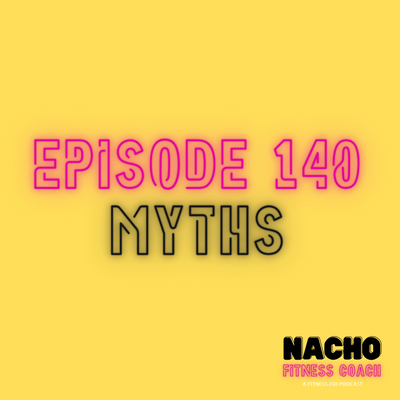Becoming a Fitness Coach: Tips, Credentials & Industry Red Flags
Have you ever thought, “Hey, I could totally teach a boot camp in the park”? Or maybe someone asked if you’d ever considered becoming a personal trainer. If that sounds familiar, this episode of Nacho Fitness Coach is for you.
Spoiler: It's not just about looking the part or having gone through your own transformation. There’s a lot more to stepping into the fitness industry—especially if you want to do it right.
Listener Q&A: Getting Started as a Group Fitness Coach
We recently got a question in our Instagram DMs (hi Armand!) asking for advice on how to get started in group fitness. The question was simple, but the answer? Not so much.
Here’s what we covered—and what you really need to know before launching into group coaching:
Step 1: Know Where You Want to Coach
Before anything else, decide where you want to teach:
- Big box gyms (like Lifetime Fitness or Planet Fitness): These usually require a specific certification from nationally recognized organizations like ACE or NASM.
- Private gyms or independent studios: Requirements vary, but many will ask for proof of certification, liability insurance, and CPR certification.
- Pop-up bootcamps in the park: Technically, you can start with zero qualifications—but we really don’t recommend that.
Step 2: Get Certified (No, Really)
Just because you’ve followed a meal plan or had your own transformation doesn’t mean you’re qualified to lead others.
A proper group fitness certification will teach you how to:
- Cue large groups safely and effectively
- Understand anatomy and movement patterns
- Modify exercises for different fitness levels
- Protect yourself legally
And yes, you’ll get an actual certificate—like a real piece of paper with your name on it and an expiration date.
Bonus tip: Certifications need to be renewed every couple of years. This keeps you updated on best practices and evolving science.
Step 3: Liability Insurance Is Non-Negotiable
If someone gets hurt in your class (and it happens), you need to be covered.
- You can’t get liability insurance without a current certification.
- Without insurance, one accident could cost you everything you’ve worked for.
- If you’re coaching independently (especially in pop-up or freelance settings), this step is even more critical.
Step 4: Stay Educated, Stay Legit
The best trainers never stop learning. That means continuing education through:
- Monthly articles and quizzes from your certifying organization
- Advanced specialty certifications (like mobility, strength, or nutrition)
- CPR renewals every two years
What worked five years ago might not be best practice today. Staying current keeps you credible and safe.
Red Flags in the Fitness Industry
Let’s be real—it’s the Wild West out there. There’s very little regulation, and:
- Anyone can start a fitness Instagram and call themselves “Coach So-and-So”
- Boutique gyms don’t always vet instructors properly
- People often share advice based on personal experience, not science
Always ask your trainer for their certifications and insurance. If they can’t provide them, that’s your cue to walk away.
Final Advice for Aspiring Coaches
If you want to coach group fitness, here’s your starter checklist:
✅ Choose where you want to teach
✅ Get certified through a reputable organization
✅ Obtain liability insurance
✅ Stay current with CPR and continuing education
✅ Respect the industry and do it right
We love your enthusiasm. Really. Just remember—being a coach isn’t about being perfect. It’s about being prepared, educated, and insured.
Ready to work with Nacho Fitness Coach?
Let's connect! We’re here to help.
Send us a message and we’ll be in touch.
Or give us a call today at 913-788-6511
Agency Contact Form
More Marketing Tips, Tricks & Tools










